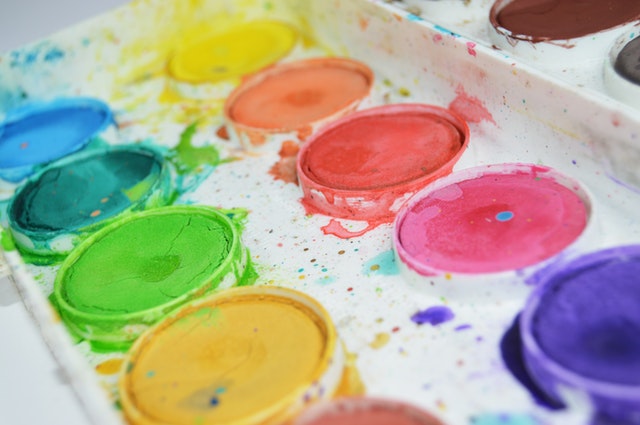Art provides a variety of learning opportunities for your preschooler. Through art-related projects and activities, your preschooler will learn about the science of mixing colors and problem-solving skills. When drawing, he learns about lines and shapes, and practices his emerging writing skills. Art also enhances his imagination and his ability to express feelings.
Coloring Books
Although you may be tempted to provide coloring books or copies of pages that are similar to coloring books—resist! Children benefit much more from blank sheets of paper, some coloring tools, and their limitless imaginations. Studies have shown that coloring books and similar materials limit the expression of a young child’s imagination. Because young children are developing their fine motor skills (the control of the muscles in their hands), they also may not be able to color within the lines, and should not be expected to do so. Coloring within lines is not natural for young children. Of course, you may find a handful of young children who enjoy the challenge. However, children will experience more joy and exploration when the paper has no lines.
Painting
Like toddlers, preschoolers love to finger-paint! In addition to non-toxic finger paints, there are many kinds of materials that can be used for finger-painting, such as non-toxic shaving cream, whipped cream, mud, or pudding. Supply a sturdy working area, such as a table or painting easels made for children. You can use different painting surfaces for this activity, as well, such as paper, trays, smooth table tops, or vinyl placemats. Allow your preschooler to experiment with different sizes of paintbrushes, cotton swabs, sponges, toy car wheels, or other household items. Use some of your old shirts for smocks, and provide a tub of water for washing paint from her hands and arms. Make these supplies available every day to encourage your preschooler’s creativity.
Mixing Colors
Provide opportunities to learn about mixing colors. Give her red and yellow paint so that she can discover what “magically” happens when the colors are mixed. She’ll be proud to tell you that she knows how to make the color orange! On other days, supply different paint colors to mix, such as blue and read for making purple, yellow and blue for making green, and white and red for making pink.
Drawing and Writing
Give your preschooler plenty of opportunities to draw and “write.” Provide crayons, water-based markers, pencils, colored pencils, chalk, white paper, and colored paper.
Personal Supply Box
Although your preschooler is learning to share, it is important that she have some time each day to play with materials that belong to her alone. In addition to community supplies, every preschooler in your care should have a clearly labeled, personal box of supplies.
A personal supply box should include a glue stick, pencils, a small box of crayons, a bottle of glue, and any other supplies you choose. You can put surprises in these boxes from time to time, such as new stickers or erasers. To prevent classroom conflicts and show fairness, make sure each child receives the same new item! Encourage your preschoolers to take care of their supply boxes by putting their “tools” away after they use them. This will help them learn to take pride in caring for their personal belongings.
Art and Fine Motor Skills
The following art projects promote your preschoolers’ fine motor skills and creativity.
· Playing with play dough and gak. Allow your preschoolers to pound, shape, cut, and mold play dough or gak regularly.
· Playing with rubber stamps, non-toxic ink pads, and stickers on paper. You can use colored paper or white paper for this activity.
· Making collages with scissors and glue. Your preschoolers can use scissors to cut paper with different textures, gift wrapping paper, greeting cards, post cards, and scraps of material. They can also add dried flowers, pipe cleaners, cotton balls, craft pom-poms, wooden dowels, bottle caps, leaves, or photographs to their collages.
Musical Experiences
Music is an important learning tool that affects preschoolers’ development in many different ways. Studies have linked musical experiences to brain development in science, mathematics, and engineering. Musical activities can also promote speaking and listening skills, balance and coordination skills, creativity, and relationship skills.
Children love to sing and dance! Involve your preschooler in musical activities throughout the day. Preschoolers will remember new information better when those new ideas are taught as a song. For example, a simple song about parts of the body makes learning fun and easy. Singing a “clean-up song” that you’ve made up or found online makes cleaning an enjoyable activity for preschoolers, who, like toddlers, typically have difficulty at clean-up time.
You can use music to signify a transition time, to calm a restless child at nap time, to develop movement skills, to tell stories, to learn math concepts, to exercise, or to dance. Parents, caregivers, and children’s librarians can help you select music that is right for you, your preschooler, and the occasion.


